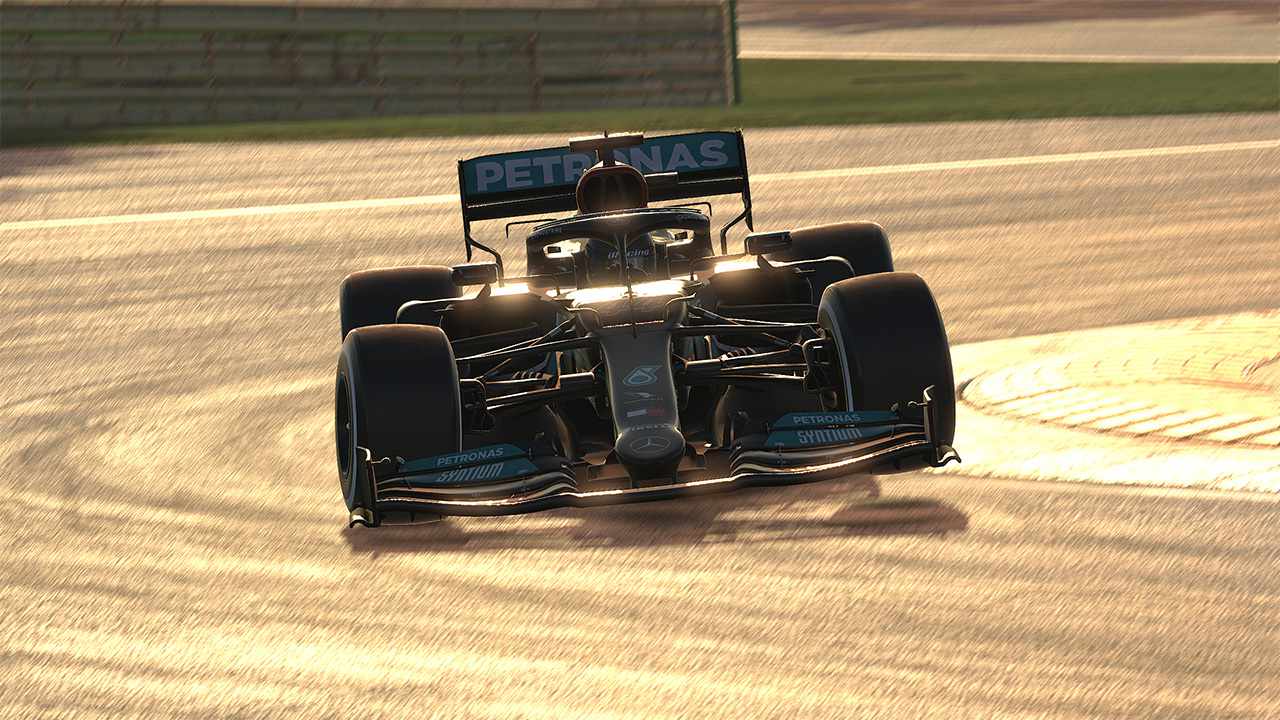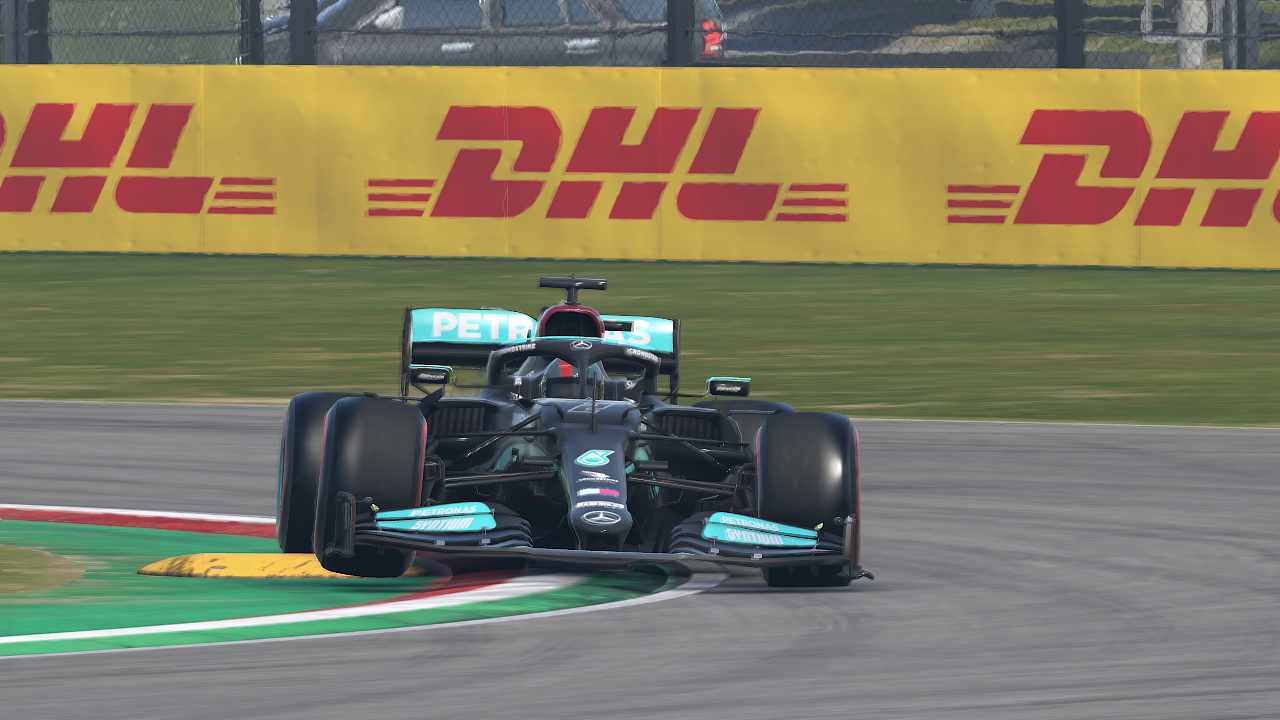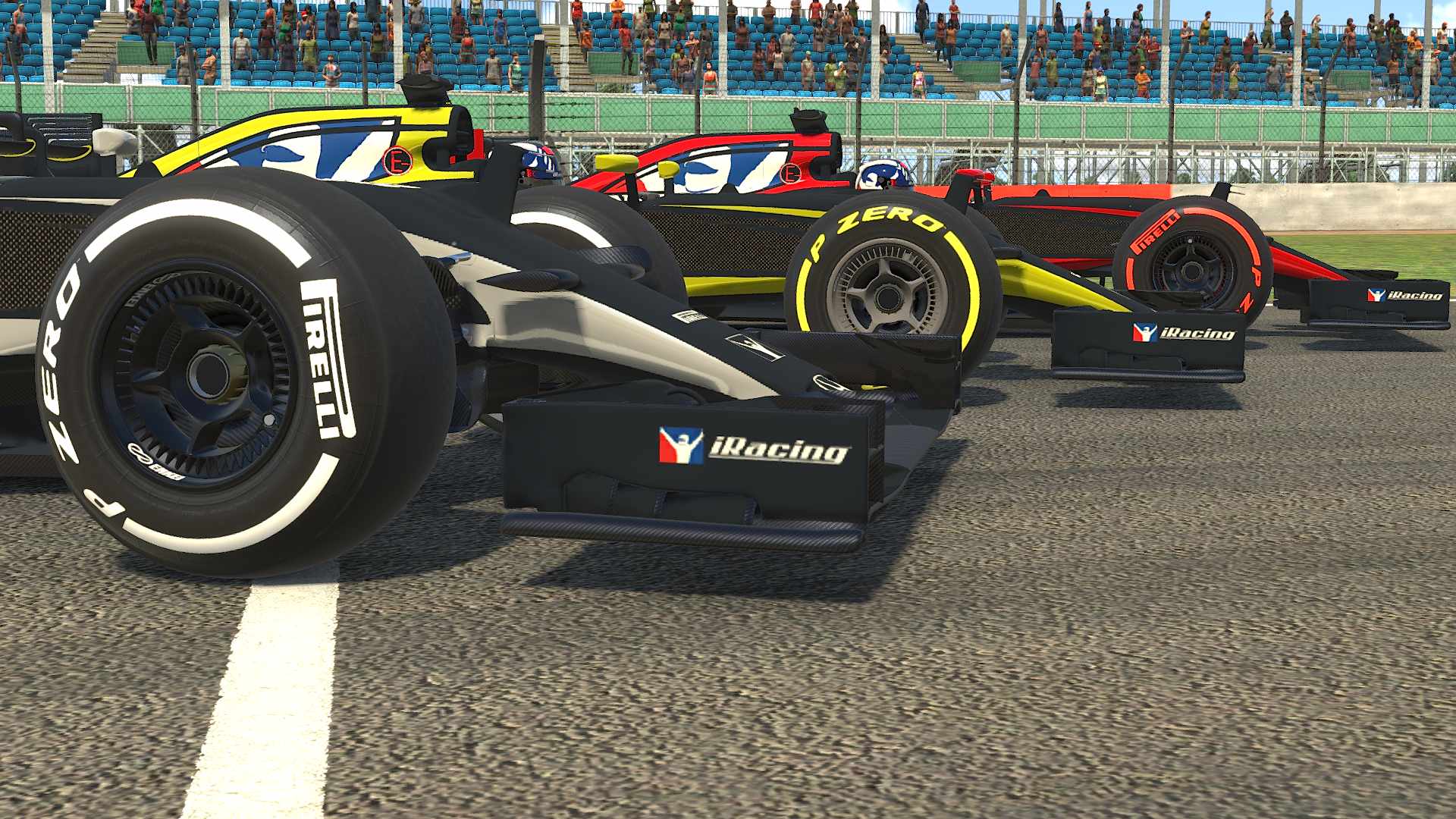iRacing has a very advanced tire model that does quite a good job of replicating what a tire does in real racing. This also means that the general rules of tire management in the real world can apply to iRacing as well.
Some cars in iRacing tend to be very sensitive to tire wear while others can handle a huge amount of punishment before finally giving up. For example, the Audi R18 LMP1 can tolerate quite a bit of lock-ups and slides without much difference in performance. This is partly due to the car having ABS and Traction Control as standard whereas the Mercedes W12 F1 car can see its tires go down to zero wear after only two or three big lockups.
We've done a few races in the Mercedes W12 recently as well as many, many practice sessions trying to learn how to get the best balance between tire wear and performance. This is what we've learned:
Brakes
This was the most important aspect of tire management. During a typical race stint, it's quite easy to push hard and lock a front tire. Typically this will be the unloaded wheel that's dragging along creating a flat spot. You can't have more than a handful of flat spots before you wear one part of that tire down to zero and then you'll be forced to pit.
Our first step was to learn to brake efficiently without locking up. We did this by making sure that our brake pedal was setup so that the pedal was really stiff at 100% pressure and we targeted 80% pressure as our main brake pressure point for most braking zones. We did this by adjusting the brake pressure within our pedal's driver settings.

We focused on braking hard initially and then coming off the pedal gently until we reach the apex. This must be a smooth movement involving both steering and brakes. This is essentially how trail braking works. Any sudden direction changes, even minor ones, may cause the inside-front wheel to unload and lock up. Minor lockups are fine but major ones can destroy your race.
We of course drove tons of laps trying to perfect our braking technique and eventually reached a point where we could comfortably run twice the number of laps on a set of tires compared to our previous method of braking.
Car setup
We used setups from VRS that helped us save a huge amount of time. Instead of pounding around the track the whole day trying to set up the car, we instead knew that the setup was already good and focused on improving our driving. The only adjustment we made was to the brake bias: we adjusted it a little to the back initially to help with lockup prevention. We slowly moved it forwards to the original setting as we grew in confidence.
Driving style

The Mercedes W12 is really fast and enjoyable to drive mainly because it's quite forgiving due to its huge levels of downforce. However, this forgiving nature means that it's very easy to overdrive the car and push way too hard. Big oversteer moments, four-wheel drifts and flinging the car around like it's a go-kart don't help with tire management. What works best is driving as smooth as possible with minimal steering movement. This means that you need to get on and off the brake and throttle pedals without sudden movements. This helps with lockups as mentioned previously and it also helps keep the car's load transfer as gentle as possible.
Throttle application
Stamping on the throttle, especially on the exit of slow corners isn't good for tires. It can cause unnecessarily high wheel rotation and a spike in tire temperature. This will of course increase wear but being smooth with the throttle, particularly in the lower gears will help maintain the perfect tire temperature and also lower wear.
Steering Angle
It's very tempting to want to hurl the car into a corner and flick the steering wheel, Alonso-style and force the car onto its outside front tire. This technique can work in qualifying but it's bad news for a race stint. It will place a huge strain on the front tires and will increase the chance of big lockups mainly because of sudden load transfer. A gentle and smooth approach with the least amount of steering angle needed is always better.
Final thoughts
Our biggest improvement in tire management in iRacing was changing how we braked. Driving style was the second big improvement. This took a lot of time and effort over several laps and practise sessions but it was worth it. Our tire management improved massively and our consistency was much better as well.
This was our experience with improving tire wear in iRacing. What tips do you have?

